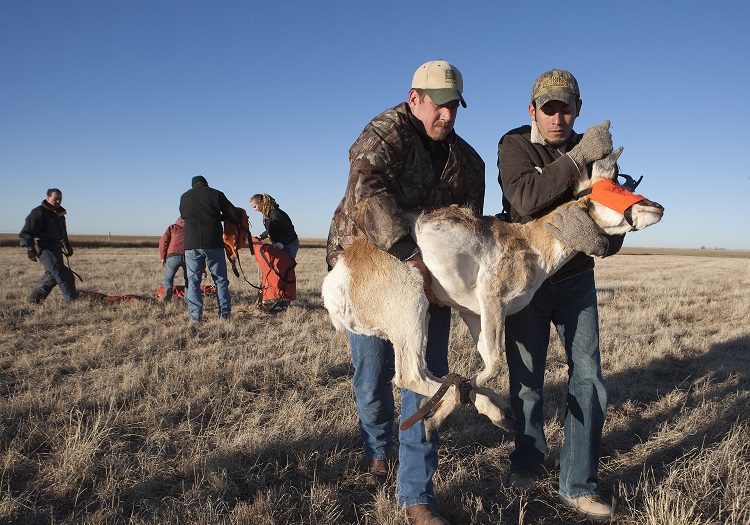Restoring Pronghorn to its Range
Monday, May 29th, 2017This is Passport to Texas
Wildlife biologist, Shawn Gray, stays busy most days in his role as Texas Parks and Wildlife pronghorn and mule deer program leader in the Trans Pecos.
I get to oversee the management and research for the two species for Texas parks and Wildlife.
This includes orchestrating the restoration of these species to their native range. Earlier this year, Texas Parks and Wildlife successfully relocated 109 pronghorn.
Our surplus populations are located in the Northwest and Northeast Panhandle. We take animals from healthy populations there to boost our local populations in the Trans Pecos that have in recent years seen historic decline.
Texas Parks and Wildlife worked with partners to redistribute the animals. After trapping them, each received a health checkup; some got radio collars for monitoring.
Translocation has been one of the management tools we’ve been able to do to help those populations rebound. There’s a whole suite of things that we do to improve populations. And, of course, we always need help from Mother Nature to make all those things work for us.
Drought was a leading factor in the pronghorn’s decline in the Trans Pecos; Shawn Gray is addressing it and other range issues to ensure the pronghorn’s future.
Through time and our management practices, the populations have been responding well.
The Texas Parks and Wildlife Foundation supports our series…and pronghorn restoration. Find out more at tpwf.org.
For Texas Parks and Wildlife…I’m Cecilia Nasti.



 Passport to Texas is a
Passport to Texas is a  Passport to Texas is made available by:
Passport to Texas is made available by: